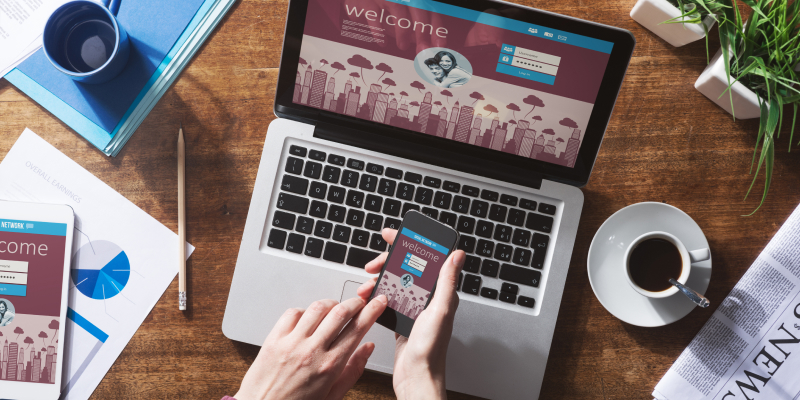Imagine you’re the landlord of a digital property—your WordPress website. You wouldn’t hand out keys to just anyone, right? Think of security measures as the locks and alarms that keep your site safe. It’s not enough to install them; you must keep them updated and watchful against cyber threats.
This guide is tailored to help you, a plugin developer, bolster your WordPress site’s defences. It will walk you through the essential steps to ensure your content remains secure and trusted by users worldwide.
Understanding WordPress Security: Key Concerns and Stats
Why should you worry about WordPress security? Because your site is a target for cybercriminals. Risks rise with each plugin and theme you add. Experts point to the latest hacking tricks like XSS and CSRF.
Hence, it is necessary to take proactive steps to stay ahead of hackers. It’s a tech-threat tango, where staying ahead means knowing the moves. So, what are the steps to a secure WordPress strategy? Here they are:
### Know The Importance of WordPress Security
Plugins and themes can be double-edged swords. They add functionality but also increase the risk. Weak passwords and outdated software are like open doors to hackers. Your best move? Stay up-to-date and strong in defence.
### Take a Proactive Approach to Security
How do you stay proactive? Keep WordPress and all its parts fresh with updates. Use tough-to-crack passwords and two-factor authentication (2FA) to guard your login. Be aware of threats and use tools to keep your site tough as nails.
Securing Your WordPress Website’s Hosting Environment
Your site’s security starts with its hosting. A good host provides SSL certificates to lock down data, enable regular backups in case of trouble, and run malware scans to keep an eye out for hackers. Managed WordPress hosting can handle much of this for you. Choose a host that offers these protections to ensure your site stands strong.
Strengthening WordPress User Credentials
Your site’s next line of defence is robust user details. Avoid ‘admin’ as a username—it’s a hacker’s first guess. Craft passwords like a secret code and mix them with letters, numbers, and symbols. Unique usernames are key, so get creative. With these steps, your site becomes a fortress.
Access Controls and Authentication
Your site’s third gateway is its login. Multi-factor authentication (MFA) is your gatekeeper. Even if passwords are exposed, MFA keeps uninvited guests out with a second check, like a code or fingerprint. You can also limit website access by defining user roles. This keeps your team in check and attackers out of your system.
Maintaining WordPress Security Through Regular Updates
Why are updates important? They respond to threats, patch weak spots, and close paths to attackers. Routine updates are part of a larger security plan that includes strong login defences for your site’s back and front ends.
Enhancing WordPress Login Security Tactics
Think of login security as your site’s front door. You can ensure this security by:
### Repelling Brute Force Attacks
Brute force attacks are like a thief trying every key to enter. Limit login trials and use CAPTCHAs to keep out fraudulent users. These simple steps can make a big difference.
### Obscuring the Login URL
Don’t make it easy for attackers—change your login URL from the standard /wp-admin to something less obvious. It’s a small change that can keep your site secure.
### Hiding the Login Page
Take it further: hide your login page. It’s a sneaky move that confuses both bots and nosy humans. Use tools to make your login page a secret virtual spot known only to you and your team.
With these tactics, your site’s login is safer. Keep up with best practices, and remember that security is a broad ecosystem that includes all aspects of your WordPress site.
Utilising WordPress Security Plugins and Tools
Security plugins like firewalls and web system hardening are like extra locks on your doors. Stay vigilant with these tools, and keep them updated as part of your more comprehensive security strategy.
Proactive WordPress Security Monitoring and Audits
Regular security checks are like having a guard always on duty. They find weak spots before hackers do. Backups are your safety net, ready to catch you if a breach happens. They’re your plan B, getting you back on your feet with minimal fuss.
Plugin and Theme Management Best Practices for WordPress
Choose plugins and themes wisely—pick those from trusted sources that update regularly. Unused plugins are like unused doors in your house; they’re potential ways in for thieves. So, remove them and close those doors tight. Disable features you don’t need, like XML-RPC, and turn off directory browsing to keep your site’s structure a secret.
Advanced WordPress Security Strategies for Developers
As a developer, your code must be solid and impenetrable, like armour. Separate your workspaces and allow only trusted IPs to connect. Hide your WordPress version and change the database prefix to confuse attackers. Your code is not just about building—it’s about protecting.
Cementing Your Digital Security
You’ve explored how to lock down your WordPress site, from hosting to user details and proactive defences. Your role is crucial, and your commitment reflects the high standards of today’s digital world.
DigitalSEO Web Design Company in Chennai is here to help you reinforce your security game. With our personalised solutions, you can strengthen your site’s defences. Ready for a site that’s as tough as you are? Reach out to DigitalSEO Web Design Company, and let’s build a secure WordPress website together.
Latest posts by Digitalseo Team (see all)
- Landing Pages for Mobile – An Optimization Guide - March 18, 2024
- Maximizing Core Web Vitals with Effective Image Optimization Techniques - March 1, 2024
- Secure Your WordPress Site: Vital Security Enhancement Tactics - January 3, 2024


